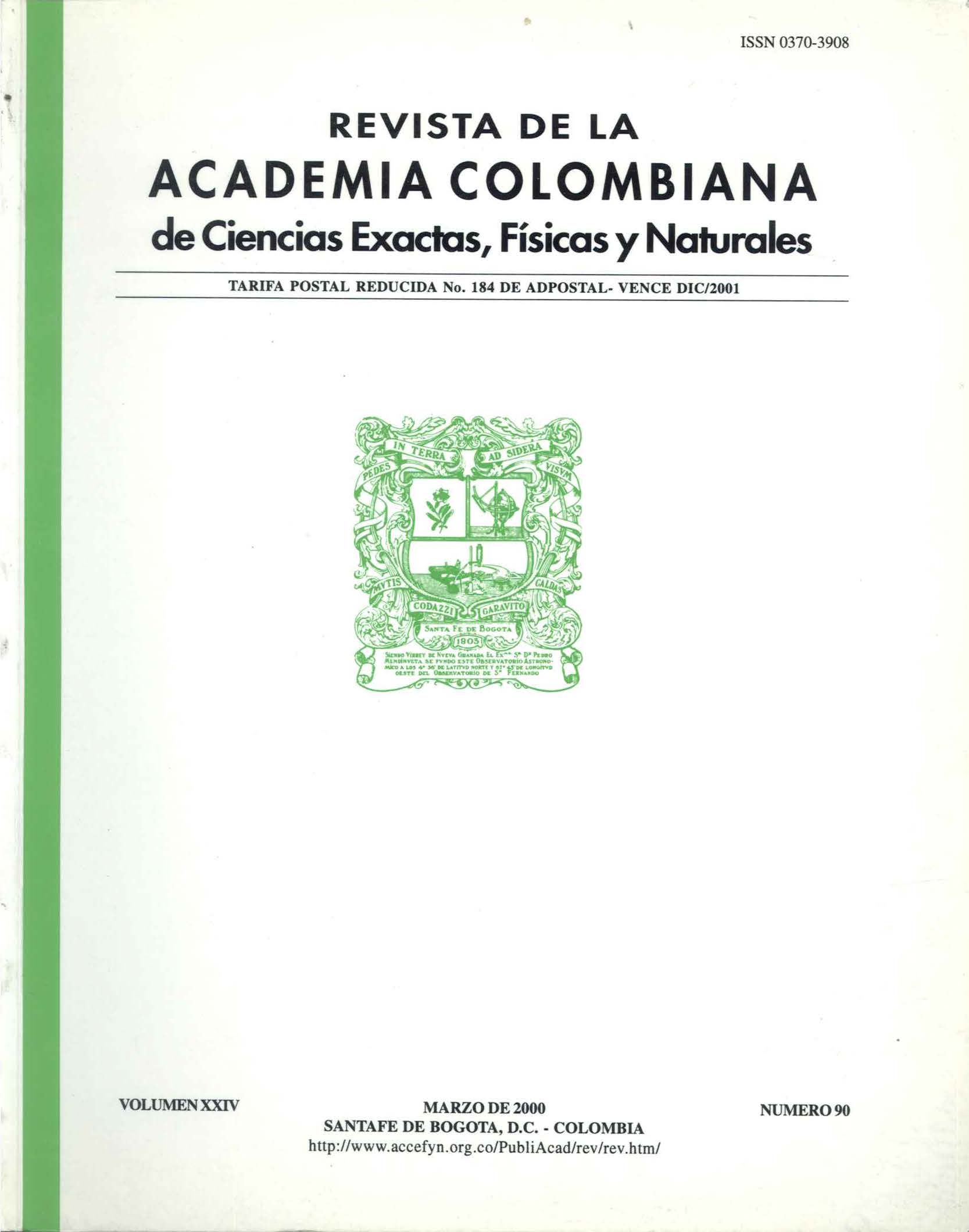Resumen
La salvia blanca, Sphacele salvia Briq., es un recurso poco conocido de la medicina tradicional chilena. Se entregan los antecedentes botánico y farmacognósticos tendientes a la elaboración de la monografía pro farmacopea. Además se elabora una clave diagnóstica basada en los anexos epidérmicos que permite discriminar salvia blanca de la auténtica salvia oficinal.
Palabras clave
Citas
Alarcon-Aguilara, F.J., Roman-Ramos, R., Pérez-Gutíerrez, S., Aguilar-C ontreras, A., Contreras-Weber, C.C., & Flores-Sáenz, J.L. 1998. Study of the anti-hyperglycemic effect of plants used as antidiabetics. J. Ethnopharmacol. 61(2):101-10.
Bell, E.A. 1981. The physiological role(s ) of secondary (natural) products. In Stumpf, P.K. & Conn, E.E. (eds.). The biochemistry of plants; a comprehensive treatise .vol.7. Secondary Plant Products, New York, Academic Press, 1-19.
Croteau, R., Felton, M., Karp, F, & Kjonaas, R. 1981. Relationship of camphor biosynthesis to leaf development in sage (Salvia officinalis). PI. physiol. 67: 820-824.
Dimayuga, R. E., Garcia, S.K., Nielsen, P. H., & Christophersen, C. 1991. Traditional medicine of Baja California Sur (Mexico). III. Carnoso!: a diterpene antibiotic from Lepechinia hastata. J. Ethnophannacol 31(1): 43-48.
Epling, C. 1934. The Labiatae of Chile. Revista Universitaria 22(1): 167-194.
Gupta, M. L. & Bhambie, S. 1980. Foliar appendages in certain species of Salvia (Studies in Lamiaceae VI). Folia Geobot. Phytotax. 15: 95-100.
Hager, H. 1885. Botanischer Unterricht in 160 Lectionen. Für angehende Pharmaceuten und studirende Mediciner. Verlag von Julius Springer, Berlin.
Hegnauer, R. 1966. Chemotaxonomie der Pflanzen vol. 4, Birkhauser Verlag, Stuttgart.
Lynch, S.P. & Webster, G. L. 1975. A new technique of preparing polleo for scanning electron microscopy Grana 15: 12 7-136.
Montes, M. & Wilkomirsky, T. 1984. Medicina tradicional chilena. Real Acad. Fann 50: 637-658.
Pachaly, P. 1990. Deutsche Apotheker Zeitung. 130:169. cit a través de Wichtl (1984).
Román-Ramos R., Flores-Sáenz J.L., Partida-Hernández, G., Lara Lemus, A., & Alarcón-Aguilar, F. 1991. Experimental study of the hypoglycemic effect of sorne antidiabetic plants. Arch. Invest. Med. (Mex.) 22(1); 87-93.
Scbnepf, E. 1972. Tubulares endoplasmatisches Reticulum in Drüsen mit lipophilen Ausscheidungen von Ficus, Ledum, Salvia. Biochem. Physiol. Pflanz. 163: 113-357.
Serrato-Valenti, G., Comara, A. B., & Ciarallo, G. 1997. Structural and histochemical investigation of the glandular trichomes of Salvia aurea L. leaves, and chemical analysis of essential oil. Annals of Botany 79: 329·336.
Silva, M. 1968. Triterpenic constituents of Lepechinia chamae dryoides. J. Pharm. Sci. 57(5): 864-5.
Urbina, P. A., Rodríguez, R. R., Sepúlveda, S. D., Montes, G.M., Pastene, N. E. & Sanhueza, V. R. 2000. Tricomas epidérmi· cos de Sphacele salviae epidermic trichomes de Sphacele sa/viae. Gayana (Bot.) 71-72.
Venkatachalam, K. V., Kjonaas, R. & Croteau, R. 1984. Development and essential oil content of secretory glands of sage (Salvia ofificinalis). PI. Physiol. 74: 148-150.
Verzár.Petri, G. & Then, M. 1975. The study of localization of volatile oil in the different parts of Salvia sclarea L. and Salvia ojficinalis L. by applying 214C sodium-acetate. Acta Botánica Academiae Scientiarum Hungaricae 21(1-2): 189-205.
Walkowiak, A. M., Simonetti, J. A., Serey l., Jordan, M., Arranz, R. & G Montenegro. 1984. Defensive patterns in shrubs of central Chile; a common strategy? Acta Oecologica Oecol plant. 15(19): 191-199
Werker, E., Ravid, U., & Putievsky, E. 1985. Structure of glandular hairs and identification of the main components of their secreted material in sorne species of the Labiatae. Israel J. of Botany 34:31-45.
Wichtl, M. 1994. Herbal Drugs and phytophamaceuticals. A handbook for practice on a scientific basis. Grainger Bisset, N. (ed.) Medphann Scientific Publishers, CRC Press.

Esta obra está bajo una licencia internacional Creative Commons Atribución-NoComercial-SinDerivadas 4.0.
Derechos de autor 2024 Revista de la Academia Colombiana de Ciencias Exactas, Físicas y Naturales





